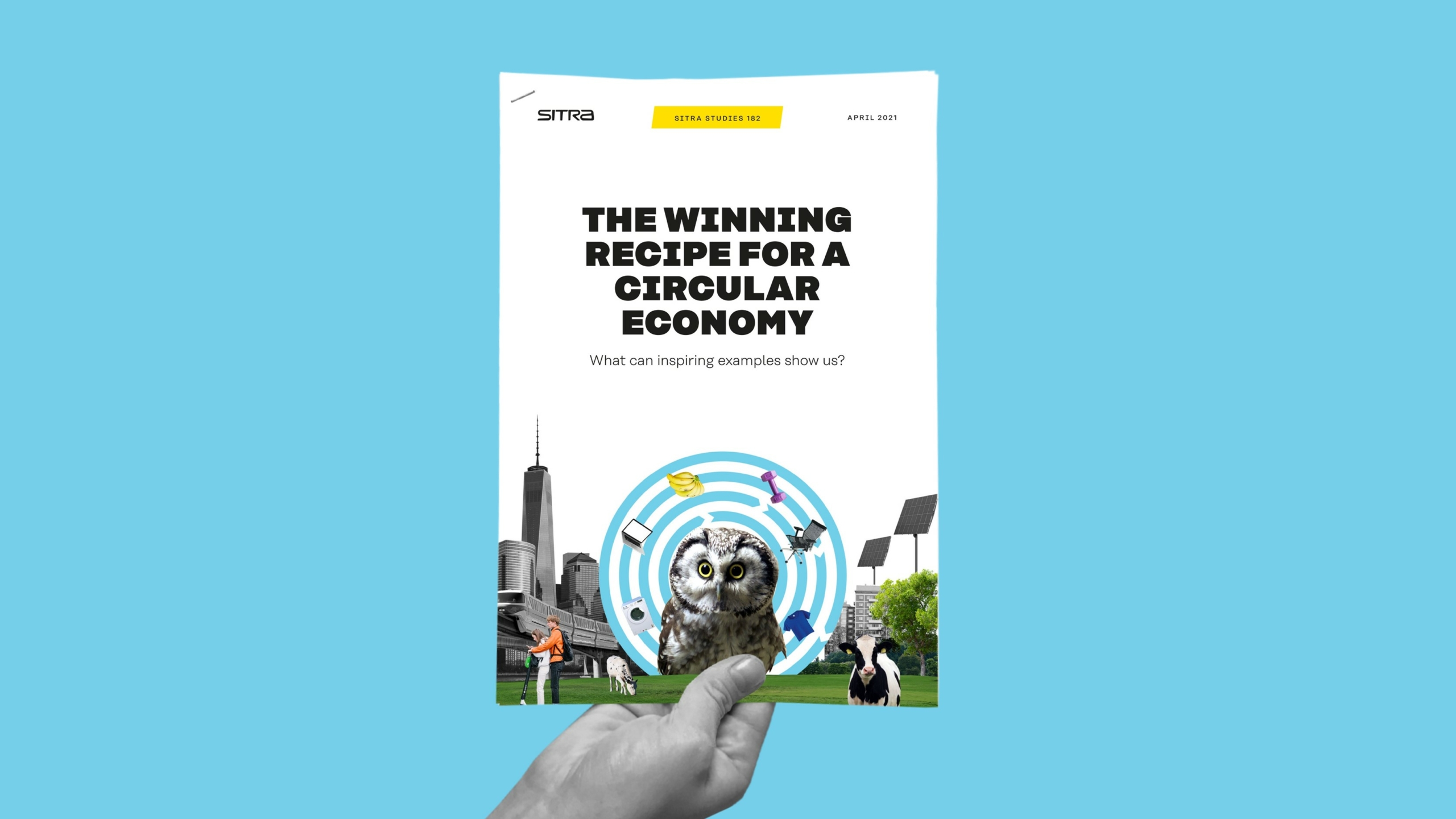Our study set out to find diverse circular economy The circular economy An economic model which does not focus on producing more and more goods, but in which consumption is based on using services – sharing, renting and recycling – instead of owning. Materials are not destroyed in the end, but are used to make new products over and over again. Open term page The circular economy solutions that are viable and scalable, that drive systemic circularity, and that have exceptionally positive environmental and social impacts. Over 200 organisations around the world submitted their solutions for consideration.
In this report, we present 39 outstanding examples of circular economy solutions that are closing material loops and driving the circular transition while being very relevant in their own environment. These solutions demonstrate the benefits of circular business operations and how different organisations across society can use circular thinking to improve the value of their business and progress towards achieving the UN’s Sustainable Development Goals.
The organisations behind circular economy solutions can be divided into circular “natives”, who have based their business idea on the concept of a circular economy, and circular “adapters”, whose core business is founded in a more traditional, linear setting. With both “natives” and “adapters”, circular innovation still often stems more from the desire to create an economically viable solution that can have an impact on society. Both types of organisations are thus active in driving systemic circularity transformation.
Circular organisations can also be examined from the perspective of circular business models. Widely accepted circular economy business models include resource efficiency and recyclability, renewability, product-life extension, sharing platforms, and product-as-a-service. Our study also revealed circular business models that often act as enablers of a circular economy. It was also observed that due to interconnectedness between the business models, it is often challenging to define which business model a solution belongs to.
Our findings on the dual role of barrier and enabler that regulation can play in the circular transition are aligned with the current discussion. Similarly aligned is our finding that a lack of awareness of a circular economy is still quite prevalent among businesses and consumers. In addition to shared challenges, we also identified common themes that featured in solutions that have succeeded in becoming viable. These included effective communications of the benefits to customers and end users, early ecosystem integration, local start and scaling, key partnerships with the third sector and the community, easy implementation in existing infrastructure, and a data-driven approach.
The 39 solutions presented in this report are remarkable in contributing to the circular economy transition by generating impacts beyond their immediate operations. In their own way, they all increase the availability of sustainable production and consumption practices. Circular economy solutions also have a strong role to play in reaching the Sustainable Development Goals of UN’s 2030 Agenda (SDGs).
While circular economy benefits are still largely perceived through impacts on resource extraction, climate change and the local environment, awareness of the social impacts is slowly growing. Currently, the social aspects remain difficult for organisations to identify, suggesting an untapped potential in circularity to contribute to the social aspects of sustainability. Circular economy solutions also help in building the multi-stakeholder partnerships that are vital to reaching the global goals.
The circular economy has the potential to create shared prosperity while reducing the stress on our environment and societies from the use of virgin raw materials and carbon emissions. Many of the world’s most pressing crises extend across many different systems and are therefore best tackled through systemic solutions. Wide-scale application of circular thinking with a consideration of all aspects of sustainable development can help us find the tools needed for the task.
Every organisation and all parts of society have a role to play in the transition to a circular economy by either innovating or adapting to circular practices.
















Recommended
Have some more.